Should Homin Replace Bigfoot?
Posted by: Loren Coleman on October 5th, 2008
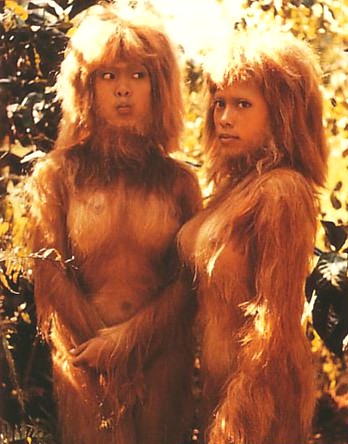
Today we reach the 50th year milestone since the first introduction of the term Bigfoot for the unknown hairy hominoids of North America. Perhaps this is a good time to ask: Should the word “homin” replace “Bigfoot”?
I have previously discussed homin, of course, but perhaps the word needs a fresh look?
J.W. Burns created “Sasquatch,” which was first published in 1929, “Bigfoot” popped into use in 1958, and apparently around 1973, Dmitri Bayanov coined “homin.”
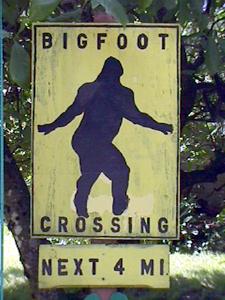
Time for a change? What do you think? Should we follow the Russians? Ivan T. Sanderson, in the 1960s, tried to convince everyone to use “Oh-Mah.” Grover Krantz wanted people to employ the term “Sasquatch” instead of “Bigfoot,” because he felt it sounded more scientific. Bayanov wishes folks would start saying “homin” to give new connotations to these unknown species, and move away from “Bigfoot.”

Dmitri Bayanov (from the Russian hominology museum site; Daniel Perez tells me he took the photograph).
Homin was created by Dmitri Bayanov to be used instead of the words Snowman, Bigfoot, Sasquatch, Almas, and other local, regional names of unknown, upright, hairy primates. Bayanov defines homin as a “non-sapiens hominid.”
The contemporary practice of using “homin” appears to be restricted mostly to Russian hominologists and their close associates. While the Russian term “hominology” has persevered and spread among Bigfoot researchers, in general, “homin” has not.
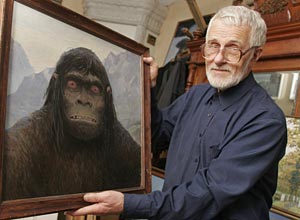
One reason it is not more popular may be that in the English-speaking world, the word “homin” is visually and lingusitically experienced as truncated, almost a typographical error. Also, for those that understand root words, it is viewed as more related to being from the Latin homin-, stem of Latin homo, meaning “human being,” than the generalized Bigfoot or Sasquatch appears to require.
Nevertheless, followers of the Russians, as noted, tend to use “homin” heavily, as reflected, for example, in Will Duncan’s title of his 2002 paper, “The Predictability of Homin Behavior.”
“Actually, homin-ology can be nothing but the science of homins.” – Dmitri Bayanov, Crypto: Hominology Special Number I
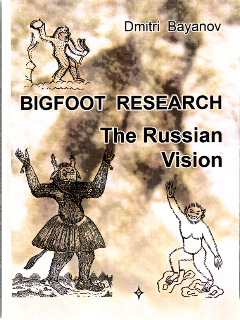
“Russian researcher Dmitri Bayanov coined the word ‘hominology’ around 1973, to denote those investigations that study humanity’s as yet-undiscovered near-relatives, including Almas, Yeti, Bigfoot/Sasquatch, and other unknown hominoids. He further defined hominology as a ‘branch of primatology, called upon to bridge the gap between zoology and anthropology’ in a 1973 letter to the London primatologist John Napier. His English paper on the subject was a major breakthrough contribution after decades of unpublicized Russian research and expeditions. The paper, ‘A Hominologist View from Moscow, USSR,’ appeared in Northwest Anthropological Research Notes, (Moscow, Idaho), vol. 11, no. 1, 1977.” – Loren Coleman, from Cryptozoology A to Z
Today, I have modified the meaning slightly, and also would add that the Russians consider their study as that of unknown or hidden hominids only, not of unknown hominoids, because they are not interested, specifically, in any unknown hairy pongids or anthropoids, which may be in the mix.
While some non-Russian Bigfoot hunters agree with the Russians that only hominids are under consideration, for myself and most other North American and non-Russian hominologists, we include all hominoids under the umbrella of “unknown hairy bipedal primates,” thus being inclusive of pongids, anthropoids, and hominids.
But that may all be nit-picking. What do you think of using homin instead of Sasquatch and Bigfoot?
About Loren Coleman
Loren Coleman is one of the world’s leading cryptozoologists, some say “the” leading living cryptozoologist. Certainly, he is acknowledged as the current living American researcher and writer who has most popularized cryptozoology in the late 20th and early 21st centuries.
Starting his fieldwork and investigations in 1960, after traveling and trekking extensively in pursuit of cryptozoological mysteries, Coleman began writing to share his experiences in 1969. An honorary member of Ivan T. Sanderson’s Society for the Investigation of the Unexplained in the 1970s, Coleman has been bestowed with similar honorary memberships of the North Idaho College Cryptozoology Club in 1983, and in subsequent years, that of the British Columbia Scientific Cryptozoology Club, CryptoSafari International, and other international organizations. He was also a Life Member and Benefactor of the International Society of Cryptozoology (now-defunct).
Loren Coleman’s daily blog, as a member of the Cryptomundo Team, served as an ongoing avenue of communication for the ever-growing body of cryptozoo news from 2005 through 2013. He returned as an infrequent contributor beginning Halloween week of 2015.
Coleman is the founder in 2003, and current director of the International Cryptozoology Museum in Portland, Maine.

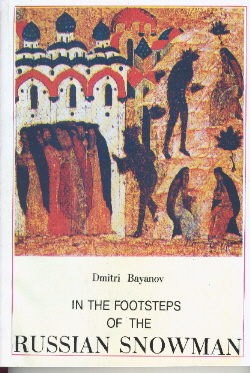









The terms “Bigfoot” and “Sasquatch” are firmly enbedded in the language of popular culture. To try to call the large, scientifically undescribed primates of North America anything else would be an exercise in futility.
The problem about the common usage of the term ‘bigfoot” is that it fundamentally undermines the possibility of a scientific conversation about the animal. When discussing the Patterson film with someone for the first time the term “bigfoot” is a huge hurdle to overcome. One can have all the facts pertaining to frame by frame enhancements, stride length, arm length, or muscle movement at their command, but, the term “bigfoot” may as well be Santa Claus. It always has, and probably always will, catch in my throat. This happens not because the term is incorrect or not descriptive, it is because of all the baggage that has been attached to the term.
When I speak with a hunter about his prey he speaks of Mallards, Eiders, or Wood ducks not “duckies”. If he used the term “duckies” I would give considerable less wieght to what he has to say. Yet, when we speak of large unidentified upright remnant populations of North American apes we freely use the term “bigfoot”. It seems to have always cheepen our collective credibility to use this term in a cavalier manner.
“Bigfoot’ is more rightly used as a term of endearment for the animal. In a formal setting it has always been a stumbling block for me. There needs to be a concious movement towards appropriate terminology if we ever hope to have any credibility in the general public. More people could be pursuaded to report a “homin” sighting than a “bigfoot” encounter.
Just something to consider.
Given that a recent UK talk host got the phrase “half Lebanese” confused with “half lesbian” for an actress.
One has to wonder what the press would do with “homin”. Not withstanding the term is a heck of a lot better and more accurate I expect than “Bigfoot”. 🙁
I think that “homin” as a catch-all name would be a good change. The various species that are described on a world wide basis are clearly not all the same creature. That way the description of “the homin known as Sasquatch,” would convey the image of the sas, as well as its location and general appearance. This way we could avoid the sometimes confusing descriptions we get now of “a Bigfoot like creature, only smaller than human and lives in the Borneo jungles,” or some such.
“Homin” would not supplant the terms Bigfoot or Sasquatch, but more specifically identify them. And its easier to spell.
As far as Kittenz’ exercise in futility is concerned, I can only point out that language is constantly in flux. I’m 58 (today) and can remember when ‘gay’ meant ‘happy,’ African Americans were Negroes, then Colored, then Black, and fat (phat?) meant overweight. Don’t ever bet on what a word will mean in thirty years. Even words that don’t exist just pop up. Blobsquatch, anyone?
I believe Dmitri does not insist to use term “homin” INSTEAD of BF or Sasquatch, but just ON A LEVEL WITH those ones (for North American creatures). “Homin” is more suitable also when speaking about creatures AS A WHOLE, including those ones from other regions.
But there are inconveniences to use such a term for Russians because of peculiarities of Russian transcription of Latin terms beginning with Homo- it is read in Russian as Gomo-, i.e. Homin will be read as Gomin. But this word sounds very close to Russian word “Gomik”, which means Gay (abbreviation of Homosexualist sounds as Gomosexual). It causes some embarrassment.
That is why I prefer to use in Russian another term – the “Troglodyte” from “Homo Troglodytes Linneus“, which means “The Cave Man”. This term was broadly used by Russian Prof. Porsnev – founder of Hominology, even offered the family “Troglodytides” in systematic of species. His novel “The Struggle for Troglodytes” had been translated and published in French by Heuvelmans as a half of his book: L’Homme de Neanderthal Est Toujour Vivant (1974)
Why the term Homin is better than Hominoid or Hominid? Because it should be conciedered as abbreviation of both Hominoid and Hominid. This term unites approach Russian and American researchers to identification of the BFs (Sasquatches).
But re insisting:
Yes, Dmitri Bayanov INSISTS to use term HOMIN instead of APE when speaking about North American creatures…
Of course, all the evidences in America prove that THEY are NOT APES!
While I agree that there are several names that are used that probably define essentially the same creature, these names tend to be specific to the region and thus serve to denote which particular area we are talking about. For example, if you say “Bigfoot” or Sasquatch” you know that we’re talking North America. “Yowie” and we’re talking Australia. It really doesn’t matter, though because these words are so entrenched that “Homin” probably will not be used outside scientific circles anyway. Mainstream people wouldn’t understand it. Can you imagine a newscaster saying. “Well Homins are in the news again! A Homin described as shaggy and 8ft. tall was reportedly seen…” It just won’t fly.
Besides, “Homin is too close to “Human” for general use and, by that close association would imply that sasquatch is basically a human to the casual observer, which is an implication we do not know is true.
Sure why not, let’s change the formula of Coke while we’re at it, should be a smooth easy transition.
I agree with “Graybear” that times change—but I also give props to “Kittenz” for pointing out that the terms “Bigfoot” and “Sasquatch” are too closely igrained in our culture to be “moved.” I guess we’ll see over time. Right now I’m happy the oft-used terms. How about “Descendants of Esau?” 🙂
Just start calling the hairy beast whatever you want, and it will either catch on or it won’t.
I’ll vote for “Descendants of Esau”; they’re hairy, hungry, gullible hunters. Good one, cryptidsrus!
I lean towards the collective that believes the term “homin” sounds truncated. I prefer sasquatch or hominid. “Homin” is just another nondescript word that muddies the water in legitimate research. It reminds me of those who insisted on calling our overseas “interpreters”, “language assistants.” Is this really where we should be focusing our efforts???
While we endeavor to discover the truth about these animals we need to remember to be weary of “the wipe”. I know that Loren has posted on “the wipe” earlier in regards to reporters and news sources of record “wiping” popular knowledge of forteana by writing stories that provide alternative explanations for said phenomena. I have noticed that the scientific community does something very similar. When a cryptid becomes a recognized species it is given a scientific catalog (fine with me) then a new name that bears no similarity to either its ethno-known or mythical name. A perfect example is the Kraken. A squid of huge proportion that science tells us couldn’t exist…until recently. Now it is a colossal squid, and we don’t talk about a Kraken anymore. And why would we? It has a name!
Before I ramble on too long, the point I am trying to make is that when we discover what these creatures are mainstream science is going to call them something else. They will try to take away the thing that reminds us all that they rejected even the possibility of the Bigfoot’s existence. They will try to take away the mythical power of his name to strike fear, and awe, and wonder. They will tame his name and by doing that will tame his impact on the imaginings and curiosities of those who will follow us. I just don’t think it would be right to help them.
North Americans are in a better condition than Russians because you have only two main names of the creature – BF and Sasquatch…
But in Russia we have a lot of local names and no one is broadly used excluding “snowman” and “yeti”. But “snowman’ became not serious for public, and it is not used by local eyewitnesses, and “yeti” is used only for Himalayan creature…
That is why for us it’s important to appoint about a common name of such a creature acceptable for all our public.
BF is not good for Russians as a term (also Sasquatch – it is less used here, nobody knows what is this), but we use both these terms in articles when we speak about North America – without translation…
That is why we offer such common/general names…
I suppose the Troglodytes is most suitable for us (see above). Maybe it will fit for Russians and be used sometime in North America also…
Not INSTEAD, but just as a common name, or for a scientific purpose as a synonim to homin, or yeti, or snowman etc…
Consider how inaccurate or confusing some local names for our favorite cryptid can be –
“Bigfoot”, for instance, whose feet are big only in comparison with ours – when considering the depth to which they penetrate snow, compared to a human’s adjacent shoeprint depth, a direct indicator of weight spread across square inches of footprint, perhaps we should be calling them “Smallfoot”!
To group Sasquatch, Yeti, Almas, Skunk Ape, Orang Pendek – the whole array of hairy, upright, bipedal creatures roaming Earth’s wilds – under one name acceptable and familiar to laypeople and researchers the world over seems to me, as pointed out by kittenz, “…an exercise in futility” – not to mention local conflict and confusion.
Names – just like endless talking about 50-year-old fake-or-not footprint casts – are just a distraction here.
I’d rather people focus on following up the evidence.
Whatever baggage surrounds any name, a handle is better than nothing. I think it will be hard for scientists and the general public to take a discussion like this one too seriously if the real research – the following up of evidence – is going nowhere. It can admittedly get annoying when “yeti,” for example, is used for animals that don’t seem to be. But I don’t think we should be wasting time on what to call something that, so far as science goes, isn’t recognized to exist. I might even say – and have seen it – that any effort to get too technical about the name and status of an unconfirmed animal might just increase the “snigger factor,” as well as transfer the baggage to a different handle.
And as to this from Igor Bourtsev: “Of course, all the evidences in America prove that THEY are NOT APES!”
Well, I’d tend to disagree. We have NO proof yet, so I think the word “prove” isn’t the right one to use in context. And I would say that such evidence as there is suggests – very strongly, to me – that the animal IS an ape. That is, a member of the ape clade, as we consider ourselves to be.
I’d just want to confirm it before debating what to call it. The final proof may render every name discussed on this thread invalid.
Shoud they or shouldn’t they…? The point is moot. The name likely will NOT change until or unless indiputable evidence exists.
There’s a reason the name “Bigfoot” is still so popular after 50 years of being coined, just as anyone knows that a “flying saucer” means, despite the effort of many investigators to stick with more ‘acceptable’ terms like UFOs or UAPs.
‘Bigfoot’ resonates with people; it has a playful undertone, which may be necessary for some folks to help them cope with what otherwise would be an scary reality.
As long as it remains playful, it remains manageable; it may be silly, but that’s just human nature.
I think, at the moment, the names for the creatures have been already defined. Bigfoot, Yeti, Sasquatch, Yeren und Almas/Almasty. The creatures, right now, are more or less “mythological” (although there are footprints and reports, no one has produced the definitive evidence).
Let us get these evidence and find out more about these interesting creatures. To protect them in the future. Then we can sit and discuss the right name.
Loren, I rarely post on these boards, but I feel I must this time.
The term “Bigfoot” has been as tied to fraud and gullibility as the Confederate flag is to racism and bigotry. Both have points of legitimacy in their backgrounds, but the usage of neither implies anything intelligent today. Although those cryptozoologists who use the term “Bigfoot” might very well be intelligent professionals, they betray none of that and imply no level of legitimacy to the creatures themselves.